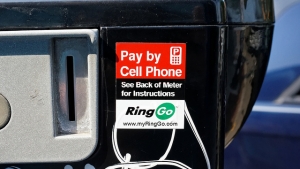
Cities look for innovative parking solutions — are there any?
Parking has become a critical problem for many large cities. As downtown areas experience historic growth and popularity, developers rush in to construct high-rise condos and apartments. Restaurants and other retail stores scramble to find downtown locations. Convention centers (usually located downtown) become more active, and hotel chains rush to build beautiful accommodations. The economic boost reflects positively on city coffers, but when parking becomes totally inadequate, chaos can follow. Solutions to the dilemma are needed.

Photo by Mark Turnauckas licensed under CC BY 2.0.
One option is to revise city parking codes. Minimum parking requirements require developers building new projects – commercial or residential – to include a minimum number of new parking spaces. The regulation, however, is already unpopular with developers who certainly don’t want to see cities increase the minimums. They argue that parking codes should factor in the availability of other transit options.
In Philadelphia, the city gave in to developers and allowed more downtown buildings to be constructed. This reduced the supply of parking significantly. From 2010 to 2015, about 3,623 off-street public parking spaces disappeared, as public parking lots and garages were replaced by high-rise buildings. The city’s actions actually forced people to find other transit options for downtown areas because parking was almost impossible. In situations like this, most people will simply quit trying to drive automobiles in downtown areas. Discouraging personal vehicles downtown is intentional on the part of transportation planners, but it forces city leaders to spend more on alternatives such as bike lanes, ride-sharing cars and bus rapid transit systems.
Los Angeles County, the most populous in the nation with about 10.1 million people, has been coping with insufficient parking spaces despite the fact that approximately 14 percent of the county’s incorporated land is devoted to parking. One response has been the implementation of dynamic parking pricing. In May 2012, the city launched the LA Express Park program. It monitors street parking through wireless sensors in a 4.5-square-mile area and meter rates are adjusted so that rates increase when demand is highest and are lowered when there is less demand. There are 6,000 meters and 7,500 lot spaces included in the project, and prices range from 50 cents per hour up to $6 an hour. Two years into the program, officials say the project is working and parking availability has improved. The city’s revenue has also increased by about 2.5 percent.
Austin, Texas, one of the fastest growing cities in the nation, had a population growth of 7.2 percent from 2010 to 2014. As the downtown area continues to grow, parking has become a huge problem. Valet parking, once an option for restaurants and other retail locations, has reached capacity and new restaurants and retail businesses cannot provide valet parking because there is no space left in the downtown area.
Because of the imbalance in supply and demand, if someone is lucky enough to find a parking place in downtown Austin, the average parking garage space costs $6 for the first hour or $21 for three or more hours. A study is being conducted by the Downtown Austin Alliance hoping to find a way to ease the problem without stopping future downtown development.
Overall, Americans are driving roughly 6 percent fewer miles than they were in 2004, but the parking space problem has initiated a solution called car sharing. In San Francisco, a nonprofit car sharing organization provides service for the entire Bay Area. With hundreds of locations throughout the area and different types of cars to choose from, the program allow residents to simply choose a car, reserve it and then pick it up when an individual automobile is needed. This may become more attractive to downtown residents in the future.
Ellicott City, Md., was facing parking issues with both merchants and residents complaining about inadequate parking in the downtown area. The city’s solution was to offer a free smartphone parking app, making it easier to find parking. Sensors were installed in each of Ellicott City’s nearly 600 parking spaces, and the app serves as a GPS system leading visitors to the nearest open parking space. With this solution, the city has distributed parking demand to underutilized spaces while alleviating the problem to some degree.
The city of Bethlehem, Pa., partnered with a mobile application company to integrate some elements of smart parking. Visitors to the downtown area now have access to an app on their smartphones which allows users to extend or decrease time on parking meters from their phones. The app is provided by a vendor at no cost to the city and users are charged a 35-cent fee for the convenience.
There are no easy answers and parking availability will definitely result in new ways of thinking about downtown travel. Either drivers will find other ways to travel in downtown areas or these problems will quickly halt new development in those areas. City leaders are more than eager to hear new ideas and discuss potential solutions.
If you’ve got new ideas to pitch to city leaders, SPI’s team of procurement experts can help you do just that. Contact them today!
